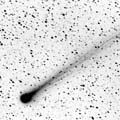
|
New comet discovered in early January by the southern survey ASAS. It brightened rapidly and reached to 5.2 mag at best in late February and early March. Now it is still bright as 5.6 mag (Mar. 10, Katsumi Yoshimoto). Very strongly condensed, and rather small considering its brightness, with a diameter of several arcmins. Long tail is also visible. It became unobservable in the Southern Hemisphere. In the Northern Hemisphere, it keeps observable in good condition until it fades out. It will be fading gradually in the morning sky after this. It will be visible visually until May.
Date(TT) R.A. (2000) Decl. Delta r Elong. m1 Best Time(A, h)
Mar. 18 21 24.66 31 39.7 0.905 0.769 47 6.8 4:36 (237, -8)
Mar. 25 21 57.60 42 2.0 1.042 0.876 50 7.7 4:42 (228,-14)
|
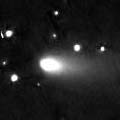
|
It will pass only 0.08 A.U. from the earth on May 12, remarkable approach after 76 years since its discovery in 1930. It was expected be so bright as 2 mag, but actually, it was fainter than its last appearance by 1.5 mag. Anyway, it will be 3.5 mag at best, and will be visible with naked eyes. It is already bright and visible visually, 11.9 mag on Mar. 10 (Katsumi Yoshimoto). Strongly condensed and easy to see. It keeps observable in good condition all through the encounter in May, while it will be brightening rapidly. Two other components B and G are also bright. The components B and G are fainter than the main component by 2.5 mag and 5.5 mag respectively. Due to the approach of the comet, Bootids meteor shower observed in 1930 may appear in outburst again in May and June. But the earth will not pass through the dust trail in calculation.
Date(TT) R.A. (2000) Decl. Delta r Elong. m1 Best Time(A, h)
Mar. 18 14 20.03 15 58.6 0.547 1.457 140 10.6 2:39 (180, 39)
Mar. 25 14 29.85 17 39.1 0.465 1.392 141 9.9 2:21 (180, 37)
|
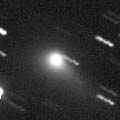
|
It has been visible visually in the southern low sky since last August. It has been bright as 10 mag for three months since December. It was very small and sharp before, however, now it looks like a typical diffuse comet. The altitude is getting lower slowly in the evening sky, and it will be too low to observe in April. It will appear in the morning sky again in late August at 13.5 mag. It will come to locate high in October, then it will be visible visually again at 14 mag.
Date(TT) R.A. (2000) Decl. Delta r Elong. m1 Best Time(A, h)
Mar. 18 1 18.77 18 20.5 2.341 1.552 29 10.2 19:39 (105,-11)
Mar. 25 1 40.78 20 56.8 2.378 1.574 28 10.3 19:29 (108,-11)
|

|
It had been originally expected to reach to 9 mag at best. But the brightness evolution has been very slow, and it is much fainter than expected actually. It was expected to be observable at 10 mag in the Southern Hemisphere in last autumn, however, it was only 12-13 mag actually. Then, it had been too low even in the Southern Hemisphere from January to February, and only few observations were reported. It was reported as 12-14 mag recently. It has already started fading before the perihelion passage. Maybe it is already fainter than this ephemeris. Now it is getting higher gradually in the Southern Hemisphere. Finally, it is getting observable in the morning sky also in the Northern Hemisphere. It will be observable in good condition after this until autumn. It may be visible bright as 12 mag until June.
Date(TT) R.A. (2000) Decl. Delta r Elong. m1 Best Time(A, h)
Mar. 18 20 30.43 -24 6.3 2.076 1.683 53 12.0 4:36 (277, 35)
Mar. 25 20 27.67 -21 7.9 1.978 1.714 60 11.9 4:42 (269, 41)
|
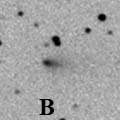
|
One of the split components born in outburst in 1995. It is brighter than its last appearance in 2001 by 1 mag. It has been brightening as rapidly as the main component, and it is already visible visually. Now it is 13.8 mag (Mar. 5, Seiichi Yoshida). It will pass only 0.067 A.U. from the earth on May 14, remarkable approach after 76 years since its discovery in 1930. It is fainter than the main component by 2.5 mag, but will be closer to the earth than the main component. It will reach to 5.5 mag, and double naked eye comets will be visible. It keeps observable in good condition all through the encounter in May.
Date(TT) R.A. (2000) Decl. Delta r Elong. m1 Best Time(A, h)
Mar. 18 14 13.39 16 43.2 0.551 1.467 141 13.2 2:32 (180, 38)
Mar. 25 14 21.72 18 30.4 0.470 1.401 142 12.5 2:13 (180, 37)
|
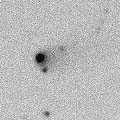
|
It brightened faster than a typical comet, and became visible visually as 13.5 mag in October (Oct. 24, Seiichi Yoshida). Now it is still bright as 13.4 mag (Feb. 27, Seiichi Yoshida). Small and strongly condensed. Because it is distant from the sun, it keeps observable at 13.5 mag in good condition for a long time until 2006 June.
Date(TT) R.A. (2000) Decl. Delta r Elong. m1 Best Time(A, h)
Mar. 18 9 41.08 52 25.6 4.596 5.194 122 13.5 21:57 (180, 3)
Mar. 25 9 39.39 51 53.9 4.660 5.193 117 13.6 21:28 (180, 3)
|

|
In 2005, outbursts occured in September and November, when it brightened up to 12.5-13 mag. It had been faint as around 15 mag in December and January. However, it has been bright at around 13 mag since late January. It was still bright as 12.5 mag on Feb. 22 (Juan Jose Gonzalez). But it will be too low to observe in late March.
Date(TT) R.A. (2000) Decl. Delta r Elong. m1 Best Time(A, h)
Mar. 18 2 18.20 22 40.9 6.479 5.795 43 13.8 19:39 (116, -2)
Mar. 25 2 23.47 22 60.0 6.553 5.797 37 13.8 19:29 (115, -5)
|
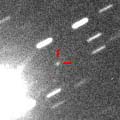
|
It has been brightening as 18.2 mag on Dec. 24 (Ken-ichi Kadota), 16.2 mag on Feb. 4 (Katsumi Yoshimoto). But it is a bit fainter than originally predicted by 0.7 mag. It is getting brighter rapidly in the morning sky. It will become visible visually at 13 mag in April, and will reach to 12 mag in June. The condition is best beucase it is almost at opposition at the perihelion passage. However, it will be very low, only 13-20 deg high, from June to September in the Northern Hemisphere. When it gets higher again, it will be fainter than 14 mag, too faint to see visually.
Date(TT) R.A. (2000) Decl. Delta r Elong. m1 Best Time(A, h)
Mar. 18 17 2.94 -18 48.7 1.257 1.742 100 14.5 4:36 (215, 71)
Mar. 25 17 18.29 -19 44.0 1.175 1.714 103 14.2 4:42 (203, 74)
|
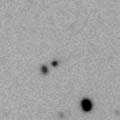
|
It was so faint as 18.5 mag at the discovery in early December, but it brightened up to 17 mag in mid January. Then it started brightening extremely rapidly after mid January. It was visible visually as bright as 14.0 mag in late February (Feb. 27, Seiichi Yoshida). Very strongly condensed and almost stellar. It will be observable in good condition at 14 mag until March. However, it will fade out soon after April.
Date(TT) R.A. (2000) Decl. Delta r Elong. m1 Best Time(A, h)
Mar. 18 10 22.42 23 33.7 0.852 1.781 149 14.9 22:39 (180, 31)
Mar. 25 10 26.45 24 54.9 0.889 1.787 142 15.2 22:15 (180, 30)
|
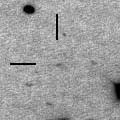
|
Second sub-component recovered on Feb. 20. Although it was fainter than 19 mag on Feb. 9, it was already bright as 18.1 mag on Feb. 13 (Ken-ichi Kadota). It brightened rapidly up to 17.5 mag on Feb. 25. It will reach to 8.5 mag at the encounter with the earth in May. However, the future brightness evolution is uncertain because this is a small component.
Date(TT) R.A. (2000) Decl. Delta r Elong. m1 Best Time(A, h)
Mar. 18 14 12.25 16 50.7 0.552 1.468 141 16.2 2:31 (180, 38)
Mar. 25 14 20.34 18 39.1 0.471 1.403 143 15.5 2:12 (180, 36)
|
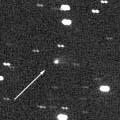
|
It will pass the perihelion soon, in 2006 February. But it did not brightened so much as expected, 15.7 mag on Dec. 18 (Ken-ichi Kadota). It keeps observable at 15-16 mag for a long time from 2005 spring to the end of 2006. Because it moves in the northern sky, it keeps observable for a long time in the Northern Hemisphere. It is brightest until May, but keeps lower than 30 deg high.
Date(TT) R.A. (2000) Decl. Delta r Elong. m1 Best Time(A, h)
Mar. 18 22 22.39 53 55.1 3.628 3.212 57 15.6 4:36 (222,-28)
Mar. 25 22 40.06 53 51.8 3.671 3.217 55 15.6 4:42 (221,-26)
|
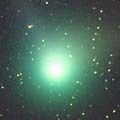
|
It was fantastic, so bright as 3.5 mag, so large as 30 arcmin, locating high overhead at its best time in early 2004 January. Then it has been getting fainter gradually, and become already too faint to see visually. However, it is still bright as 15.6 mag by CCD observations (Mar. 4, Katsumi Yoshimoto). It keeps observable until October when it becomes fainter than 18 mag.
Date(TT) R.A. (2000) Decl. Delta r Elong. m1 Best Time(A, h)
Mar. 18 17 1.06 1 27.1 4.899 5.200 102 15.6 4:36 (198, 52)
Mar. 25 17 0.40 1 45.7 4.862 5.266 108 15.6 4:42 (184, 53)
|
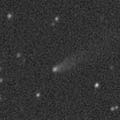
|
Although it was faint as 18 mag at the discovery in 2004 November, then it brightened very rapidly until early 2005, and reached to 16.0 mag on May 7 (Ken-ichi Kadota). After it appeared in the morning sky again, it continued brightening furthermore, and reached to 14.7 mag on Nov. 22 (Ken-ichi Kadota). It is also visible visually as 14.0 mag (Feb. 27, Seiichi Yoshida). After this, it keeps bright as 14-15 mag for a long time until spring. In the Northern Hemisphere, it keeps observable in good condition until summer when it becomes too faint.
Date(TT) R.A. (2000) Decl. Delta r Elong. m1 Best Time(A, h)
Mar. 18 14 2.10 14 39.4 1.948 2.819 144 15.9 2:21 (180, 40)
Mar. 25 13 57.72 14 58.6 1.941 2.846 149 16.0 1:50 (180, 40)
|
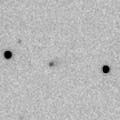
|
It brightened faster than a typical comet, and it reached to 15.8 mag on Feb. 9 (Ken-ichi Kadota). It will be observable in good condition as 16 mag for a long time until next spring.
Date(TT) R.A. (2000) Decl. Delta r Elong. m1 Best Time(A, h)
Mar. 18 10 23.54 66 29.0 4.510 4.982 112 16.0 22:39 (180,-11)
Mar. 25 10 20.07 65 57.2 4.565 4.985 109 16.1 22:08 (180,-11)
|
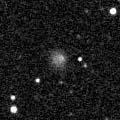
|
It had been an extremely faint Centaur asteroid until 2004, fainter than 21 mag. However, it brightened up to 17.5 mag on 2005 Dec. 30, and a coma was observed, then it was revealed to be a comet. It brightened furthermore, 14.8 mag on Jan. 7 (Ken-ichi Kadota). It was also visible visually at 14.4 mag (Jan. 8, Seiichi Yoshida). It looked like a planetary nebula. It was diffuse visually. It seems to be a temporary brightening in outburst. It kept bright at 14 mag until early February, but it faded down to 15.4 mag on Feb. 28 (Giovanni Sostero and Ernesto Guido). It will return to be so faint as 21 mag in the near future. But it may be brighter than this ephemeris still now. It will pass the perihelion in 2015. The heliocentric distance reduces down to 5.9 A.U., but it will be 17 mag at best. However, another outburst may happen again in the future.
Date(TT) R.A. (2000) Decl. Delta r Elong. m1 Best Time(A, h)
Mar. 18 13 13.05 -5 40.7 12.006 12.935 158 16.2 1:32 (180, 61)
Mar. 25 13 11.53 -5 30.4 11.955 12.922 165 16.6 1:03 (180, 61)
|
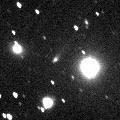
|
It had been observed at 16 mag by CCD, or 14 mag visually, in spring and summer in 2005. Now it is appearing again in the morning sky. It will be observable again at 16 mag in spring and summer in 2006. But the altitude will be somewhat lower than in 2005.
Date(TT) R.A. (2000) Decl. Delta r Elong. m1 Best Time(A, h)
Mar. 18 19 35.31 -1 5.3 4.176 3.837 63 16.4 4:36 (245, 33)
Mar. 25 19 39.06 -1 34.7 4.097 3.855 69 16.4 4:42 (239, 39)
|
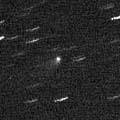
|
It was visible visually as 14.3 mag in 2005 spring (July 10, Edwin van Dijk). Now it is 16.6 mag (Feb. 5, Ken-ichi Kadota). Although it keeps 16.5 mag from December to early April, then it will fade out rapidly, and become fainter than 18 mag in July.
Date(TT) R.A. (2000) Decl. Delta r Elong. m1 Best Time(A, h)
Mar. 18 12 17.00 17 52.6 3.171 4.128 161 16.5 0:37 (180, 37)
Mar. 25 12 2.88 18 42.9 3.215 4.164 159 16.5 23:50 (180, 36)
|
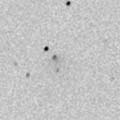
|
It passes the perihelion in 2006 February. But it is outside of Jupiter's orbit. So it keeps 17 mag for a long time. Because it moves in the northern sky, it keeps locating high and observable in good condition until 2006 summer.
Date(TT) R.A. (2000) Decl. Delta r Elong. m1 Best Time(A, h)
Mar. 18 15 10.25 69 27.7 6.491 6.801 104 16.7 3:29 (180,-14)
Mar. 25 15 1.17 69 43.3 6.502 6.803 103 16.7 2:53 (180,-15)
|
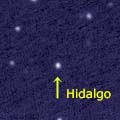
|
It reached to 13 mag and was observed visually in good condition in 2004 autumn. It has been not observable since August, but it is appearing at dawn again. It keeps 17 mag until late April. But it will go away soon after that. Next return is in 2018, when it will be 14.3 mag at best.
Date(TT) R.A. (2000) Decl. Delta r Elong. m1 Best Time(A, h)
Mar. 18 13 14.09 6 26.2 3.149 4.090 158 16.8 1:34 (180, 49)
Mar. 25 13 7.79 6 29.1 3.162 4.131 164 16.7 1:00 (180, 49)
|
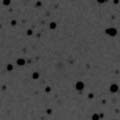
|
Great outburst over 6 mag has occured always in recent appearances in 1995 and 2001. The ephemeris says it will be 14 mag at best, but the actual brightness evolution will not be along the prediction. It is expected to be visible visually due to an unpredicted outburst again in this return. It is 16.6 mag on Mar. 3 (Toni Scarmato), already brighter than this ephemeris. Although it will not approach to the earth so much in this return, it keeps observable all through the period in the evening sky until autumn. It becomes brightest in June and too faint in autumn. It keeps locating around 30 degree high after May.
Date(TT) R.A. (2000) Decl. Delta r Elong. m1 Best Time(A, h)
Mar. 18 5 39.44 20 15.2 1.186 1.521 88 17.1 19:39 (152, 30)
Mar. 25 5 49.05 21 14.1 1.192 1.463 83 16.9 19:29 (151, 28)
|
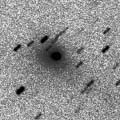
|
It has already gone far away, and it must have been around 19 mag in calculation. Actually, it was so faint as 18.3 mag on Jan. 8 (Ken-ichi Kadota). However, an unexpected outburst happened and it brightened up to 15.7 mag on Jan. 27 (Ken-ichi Kadota). Then it has been fading rapidly, but it is still bright as 16.6 mag on Feb. 25. Probably it is observable brighter than 18 mag until April.
Date(TT) R.A. (2000) Decl. Delta r Elong. m1 Best Time(A, h)
Mar. 18 15 4.58 -9 26.8 2.699 3.428 130 16.9 3:24 (180, 64)
Mar. 25 15 1.62 -9 18.0 2.662 3.466 137 17.0 2:53 (180, 64)
|
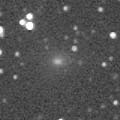
|
It reached to 11.4 mag in August (Aug. 12, Juan Jose Gonzalez). It was expected to start fading since early September. But actually, it keeps bright as 11.8 mag still on Oct. 7 (Juan Jose Gonzalez). Because it had been very low in the morning, it was not observed visually after that. Now it faded down to 16.6 mag (Jan. 28, Katsumi Yoshimoto).
Date(TT) R.A. (2000) Decl. Delta r Elong. m1 Best Time(A, h)
Mar. 18 12 32.23 -11 10.5 2.151 3.118 163 17.1 0:52 (180, 66)
Mar. 25 12 21.83 -11 19.8 2.208 3.195 170 17.3 0:14 (180, 66)
|

|
Although it is not observable around the perihelion passage, it is observable at 17-17.5 mag in good condition both in spring and autumn.
Date(TT) R.A. (2000) Decl. Delta r Elong. m1 Best Time(A, h)
Mar. 18 11 13.37 66 1.0 1.609 2.218 114 17.5 23:23 (180,-11)
Mar. 25 9 59.65 67 2.8 1.650 2.167 107 17.4 21:43 (180,-12)
|

|
It was observed as 17.6 mag on Jan. 3 (Ken-ichi Kadota). It will be observable at 18 mag in good condition until May.
Date(TT) R.A. (2000) Decl. Delta r Elong. m1 Best Time(A, h)
Mar. 18 13 40.89 71 32.3 4.574 4.963 107 17.5 2:01 (180,-16)
Mar. 25 13 12.08 72 14.8 4.604 4.965 105 17.5 1:05 (180,-17)
|
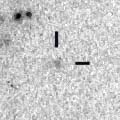
|
It is observable at 17.7 mag in 2006 spring. It is also observable at 17.5 mag in 2007 spring, but the altitude will be a bit lower.
Date(TT) R.A. (2000) Decl. Delta r Elong. m1 Best Time(A, h)
Mar. 18 11 19.77 8 3.0 3.870 4.853 169 17.7 23:35 (180, 47)
Mar. 25 11 16.44 8 19.3 3.887 4.847 162 17.7 23:04 (180, 47)
|

|
Peculiar asteroid with a comet-like orbit. Although it is not observable around the perihelion passage, it will reach to 17.5 mag only in a short time around March and November.
Date(TT) R.A. (2000) Decl. Delta r Elong. m1 Best Time(A, h)
Mar. 18 9 12.04 29 36.4 1.428 2.229 132 17.8 21:26 (180, 25)
Mar. 25 8 40.33 31 24.2 1.522 2.191 119 18.0 20:27 (180, 24)
|

|
It reached to 17 mag in 2004 autumn. Although it has been not observable for a while, now it is observable as 17 mag in good condition again. It was reported as 18 mag recently, fainter than this ephemeris by about 1 mag.
Date(TT) R.A. (2000) Decl. Delta r Elong. m1 Best Time(A, h)
Mar. 18 7 12.98 17 8.9 2.931 3.405 110 17.8 19:39 (177, 38)
Mar. 25 7 15.72 17 10.2 3.040 3.421 103 17.9 19:29 (173, 38)
|
|
![]()
 C/2005 G1 ( LINEAR )
C/2005 G1 ( LINEAR ) 99P/Kowal 1
99P/Kowal 1 2006 BZ8
2006 BZ8 119P/Parker-Hartley
119P/Parker-Hartley![]()






















